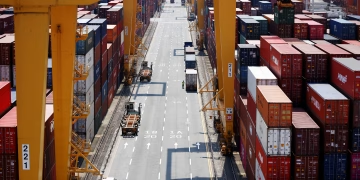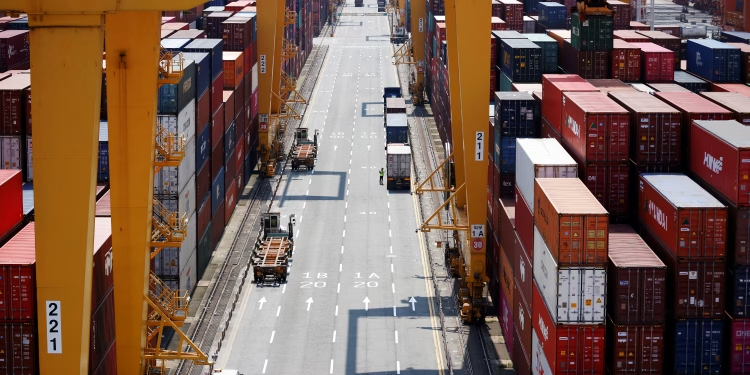By Maria Kalamatas | July 31, 2025
Busan, July 31 — Before sunrise, the queue of trucks outside Busan’s New Port was already stretching beyond the expressway exit. Drivers leaned against their cabs, sipping coffee, waiting for the gates to open. Inside, the container stacks looked more like city blocks than cargo piles, with some boxes waiting over a week to be cleared for export.
July’s surge — an 18 percent jump in volumes compared to last year — has forced Korea’s busiest port to take steps it rarely uses. Officials are leasing nearby industrial land as temporary yards, adding new truck lanes, and even arranging barge shuttles to move boxes to smaller ports along the southern coast.
“This isn’t just peak season chaos,” said Lee Hyun‑soo, who manages daily operations at New Port. “Exporters are front‑loading shipments because they fear vessel shortages later in the year. The result is yards filling faster than we can turn them over.”
A scramble to keep cargo moving
To ease the pressure, the port authority is converting vacant plots near Gamcheon into staging areas for full containers, while customs staff work extended hours to cut clearance times. Additional scanning units are being rolled in, and local logistics firms have been asked to stagger truck arrivals to reduce choke points at the gates.
Even with these measures, Lee admits the port is “walking a fine line” as the seasonal build‑up continues. If volumes stay high into September, Busan may have to pull forward parts of a terminal expansion project originally slated for 2027.
A global ripple effect
Busan ranks as the world’s seventh‑largest container hub. A slowdown here doesn’t just hurt Korean exporters — it delays goods bound for Europe, North America, and the Middle East. Freight forwarders are already warning customers to add at least three to five days to lead times until congestion clears, which officials hope will happen by mid‑August.
For now, all anyone can do is keep the boxes moving — and keep the trucks coming.























